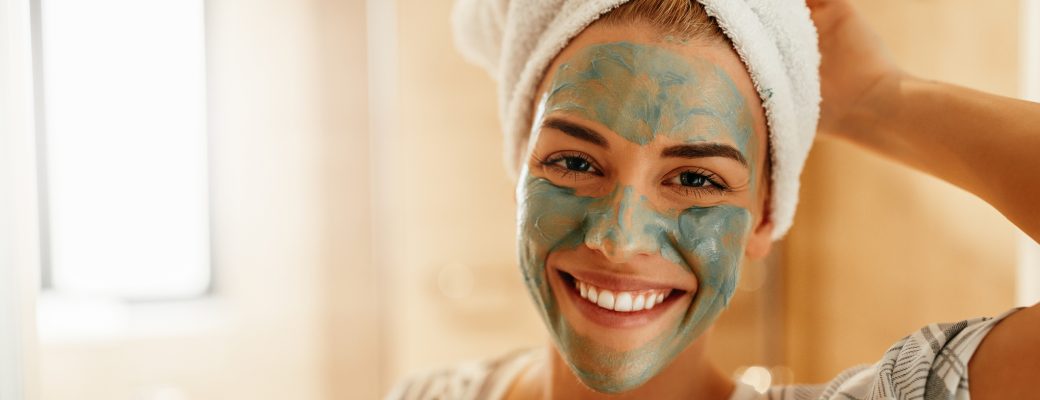How can spa operators perk up their client loyalty through retail programs? We asked five experts.
The Science of the Spa: Masks
To Your Masks… Ready… Set… Go!
Long considered superfluous, masks are making a remarkable comeback to store shelves. They are appreciated for their many benefits – they smooth out the contour of the eyes, soften facial features, restore radiance to dull complexions, brighten tired-looking faces, rehydrate the skin in a matter of minutes – but also for the few moments of relaxation they provide. And beauty professionals agree that women who use facial masks on a regular basis have a better quality of skin.
HOW MASKS WORK
A mask is generally defined as a cosmetic preparation of varied consistency intended to be applied to the skin in a relatively thick layer which is left on the skin for several minutes before being removed. It differs from other skin care products in that it is concentrated in active ingredients but also, and perhaps more importantly, because it creates a temporary occlusive effect. Indeed, just like plastic food wrap, masks form an impermeable film on the surface of the skin. This “sealed-in” effect isolates the skin from the external environment, increases surface hydration – by limiting transepidermal water loss – and improves the level of penetration of the mask’s active ingredients. It’s as if the skin is being immersed in a bath of active ingredients. And the longer the occlusive barrier is maintained, the more the ingredients take effect.
Unlike a cream, a mask’s contact time with the skin is shorter. But thanks to the occlusive effect and greater concentration of active ingredients, masks have a more intense effect, therefore leading to immediate results. Masks reinforce the properties of other daily skin care products, especially if they contain similar ingredients. Furthermore, products applied after the use of a mask are better absorbed by the skin.
A cornerstone of any “in clinic” skin care service or an essential element of any at home beauty routine, a facial mask can also be an invaluable tool after a sleepless night or a period of fatigue. So, how can you get the best out of a facial mask?
Cream Masks
Generally intended for dehydrated, dry or sensitive skin, and mature or fatigued skin, the velvety texture of cream masks allows them to be quickly absorbed. They help moisturize the outer layers of the epidermis, repair the skin’s barrier, and alleviate discomfort. They leave the skin feeling soft and supple, they smooth out fine lines and relax the features. Along with patch masks, cream masks tend to be the most potent in terms of treatment.
Purifying Masks
Designed specifically for mixed or oily skin, they remove impurities and absorb excess sebum. They leave the skin clean, fresh and radiant. They unclog pores and refine the skin’s texture. This type of mask is also ideal for dull skin, for smokers, and for so-called asphyxiated skin. The most popular purifying masks are charcoal or clay-based.
Exfoliating Masks
The most common key ingredients in exfoliating masks range from abrasive particles to keratolytic enzymes or alpha-hydroxy acids. Keratolytic enzyme and alpha-hydroxy acid masks are the preferred options for sensitive skin, as these minimize or even eliminate any mechanical action that may be damaging for this type of skin. For other skin types, the optimal effect is obtained with masks that combine mechanical action with enzymatic/chemical action.
Radiance Masks
Intended for all skin types – except acne-prone skin because they tend to be too rich – radiance masks act like a magic wand that erase the signs of fatigue and quickly restores skin’s beauty before a special occasion or simply after an insufficient or difficult night’s sleep. A tightening effect, a radiant complexion and longer-lasting makeup are guaranteed. Available in either a cream or a cream gel, they are applied as often as necessary, in a thick layer, and left on for 10 minutes before the excess is removed with tissue paper… they must never be rinsed off! Radiance masks are an effective substitute for day creams.
Gel Masks
Ideal for instantly replenishing the skin, gel masks help smooth facial features and quickly restore the moisture reserves of the outer layers of the epidermis. Truly leading-edge, gel masks are particularly beneficial for the eye contour area: thanks to their oil-free texture and high water content, they help smooth out dehydrated skin around the eyes and they effectively reduce puffiness. They can be safely applied as often as desired on the eyelids and even very close to the edge of the lashes. In order to intensify their effects, store them in the refrigerator, in the vegetable crisper. The delightful, fresh feeling experienced when applying the cooled mask promotes the decongestion of the skin.
Patch Masks
Appearing on the market just a few years ago, patches are intended for the treatment of dehydrated, dry, tired or mature skin. Inspired by the medical world, patches allow for an intense and localized application of active ingredients. Designed to be used on the face or around the eyes, their purpose is to moisturize or act as an anti-aging treatment. They are offered in the form of pre-soaked fabric patches which, once applied to the face, quickly saturate the skin with active ingredients. Patch masks are particularly valued because they are practical and easy to use; they don’t drip, don’t require rinsing and can be applied without getting any in the hair. It is recommended to prioritize fragrance-free formulas, especially for patches intended for the eye contour area.
Multimasking
Multimasking consists of applying several masks to the face, each selected according the needs of the area in question. It is a made-to-measure technique, a way to customize the mask, to treat the skin area by area for a very tailored treatment. The treatment begins with the identification of the different skin problems, then follows with the application of a mask adapted to each area/problem. For example, a purifying mask can be applied to the T-zone or areas of the skin prone to imperfections, an anti-aging gel patch can be applied to the contour of the eyes, and a firming mask can be applied on the cheeks, forehead and oval of the face.
A Few Helpful Tips For Spa Clients
- Generally, facial masks are used once a week. Radiance masks and eye contour masks can be applied as often as necessary.
- Always remove make-up and clean the skin first.
- For an optimal penetration of the active ingredients, exfoliation is recommended beforehand.
- Taking a hot bath while masking not only transforms this time into a relaxing break but also improves the skin’s absorption of the mask thanks to the warm vapours.
- Cream masks and patch masks should not be rinsed off, but instead, in order to benefit from their full effect, the excess should be carefully rubbed into the skin using light strokes until complete penetration is seen.
- Other types of masks should be rinsed off gently, first with warm and then with cool water, using cotton balls or a washcloth soaked in warm water… or even better, in floral water. Then, the skin should be carefully dabbed dry with tissue paper.
- Ideally, clay masks should not be allowed to dry on the skin. In order to ensure this, damp compresses can be applied to the surface. Clay is very absorbent and can dehydrate the skin. If necessary, rehydrate the mask before removing it.




